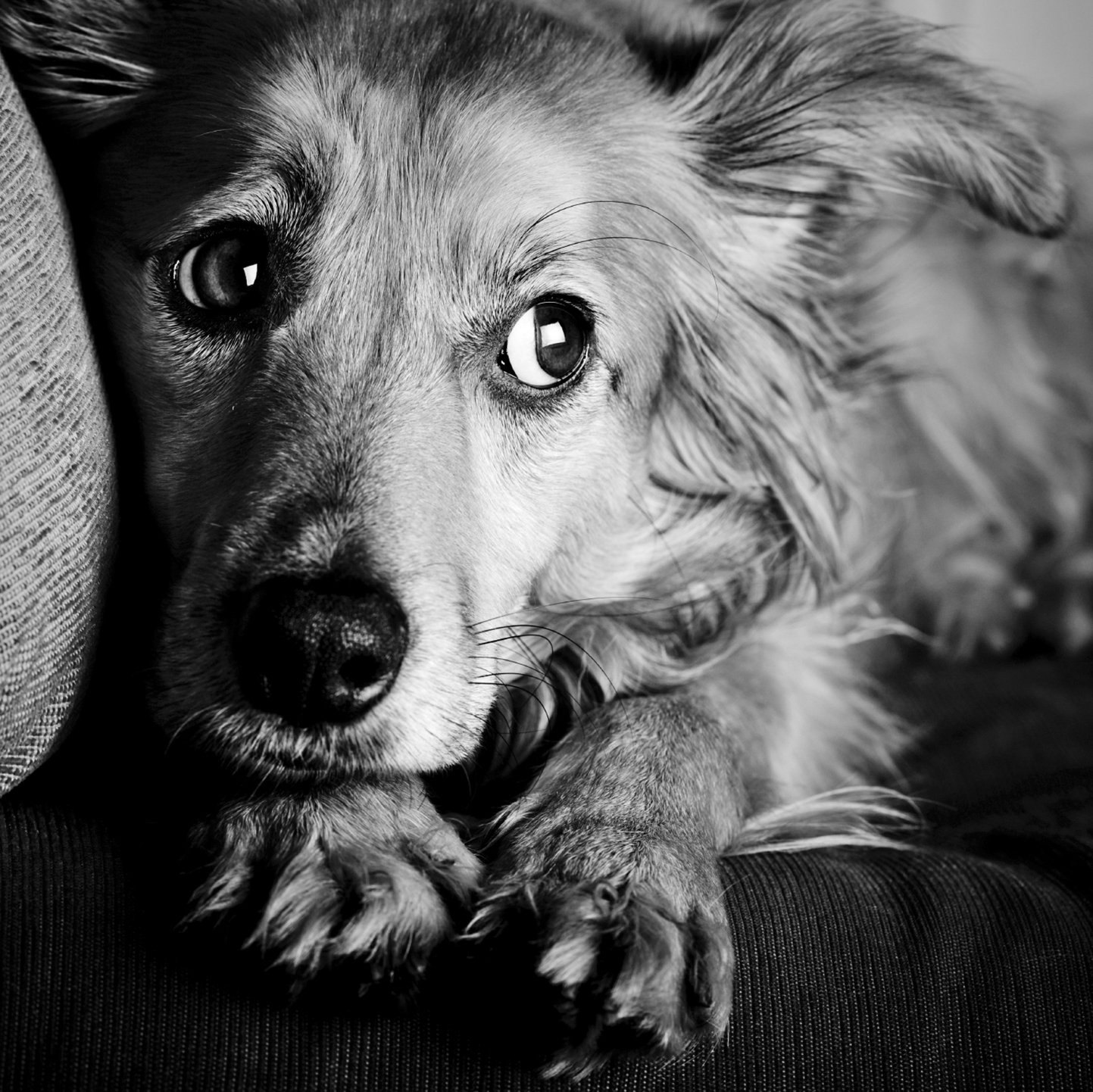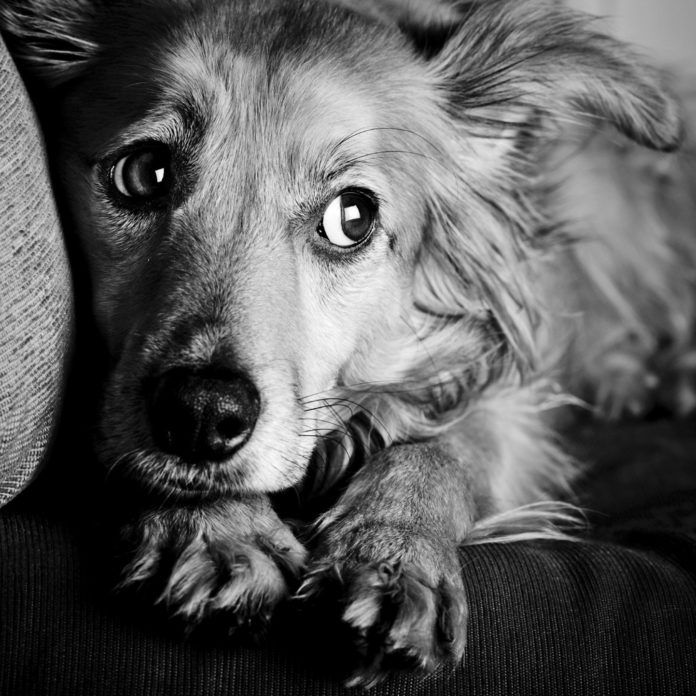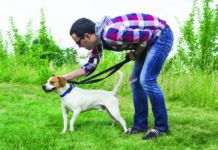
It used to be accepted as common knowledge that dogs maintain a rigid social hierarchy largely through displays of physical might by an “alpha” who maintains his dominant position with aggressive force. The thinking was based on studies of wolves and other species in captivity, who couldn’t get away from each other and had been thrown together artificially rather than forming a family in a natural manner. That led, not surprisingly, to physically pushy and sometimes violent behavior. Since wolves are the ancestors of dogs, it was reasoned that dogs, too, strive to be the alpha. The theory became so ingrained that it was even used by dog trainers to interpret interactions between dogs and people. A desire for dominance over their owners, it was said, fueled dog behaviors ranging from aggression to jumping on people when they came home from work to refusing to come when called. In other words, dogs misbehaved because they were consciously striving to outrank those who took care of them.
This led to decades of trainers working to modify undesirable behavior in dogs with physical force or coercion, the idea being that if a dog wants to call the shots, you have to teach him who’s boss, take back your higher ranking. The approach has reached a crescendo over the last few years, with television shows teaching millions of dog owners that the way to control a dominant dog is to dominate it back — pinning him to the ground, yanking a choke chain, and so on.
But some of the very same people who conducted the early studies on artificial “packs” of wolves in captivity have since recanted, saying that in their natural state, wolves are much more cooperative with each other, living more as a family group, with behavior to assert dominance rare.
The animal behavior research community has absorbed the rethinking. Says the Dog Welfare Campaign, a website with the imprimatur of animal protection groups that include the ASPCA and the European Society of Veterinary Clinical Ethology, “the foundations on which [the dominance] theory was based are fundamentally flawed….dominance is no longer regarded as a useful explanation for the behavior of dogs.” Further, says the site, “studies of interactions between dogs show no evidence of fixed ‘hierarchical’ relationships.”
The American Veterinary Society of Animal Behavior echoes the sentiment, saying that the “dominance theory should not be used as a general guide for behavior modification.” Canine aggression, the society says further, is not an assertion of dominance but is virtually always about anxiety or fear on the dog’s part and needs to be dealt with accordingly.
Nicholas Dodman, BVMS, Director of the Animal Behavior Clinic at Tufts, agrees. “Dogs who show aggression, including aggression toward their owners, also show, with relative frequency, fear-type behaviors,” he says. “They might have separation anxiety or thunderstorm phobia or submissive urination. They’re not just alpha dominant King Kong dogs. They are nervous, or they’re unclear about your expectations of them,” which in and of itself makes a dog feel a bit lost and more prone to act inappropriately.

“Most canine behavioral concerns are rooted in anxiety,” adds Karen Overall, VMD, PhD, a board-certified animal behaviorist in Glen Mills, Pennsylvania. “Frankly, there is just too much labeling and not enough thinking and understanding out there, and it has done a lot of harm. Anyone who thinks they have to ‘dominate’ another species…has just defined a pathology.”
Another way of putting it: threatening, confrontational tactics to get a dog to cease undesirable, aggressive behavior only leads to an erosion of all trust between dog and owner, and perhaps further aggression on the dog’s part. It does not get at the root cause of the dog’s acting out.
Unfortunately, many in the community of dog trainers, particularly trainers whose reach through the media is vast, are still in “foot on belly” mode. They use the dominance theory to justify physical force, or, as we call it here at Tufts, abuse. And it only makes things worse. Says Patricia McConnell, PhD, a certified applied animal behaviorist as well as an adjunct professor in the Department of Zoology at the University of Wisconsin, “I’ve met people who were told to take their dog and do an alpha roll,” forcing the dog on his back with belly exposed. “And the dog bit them even though it had never acted aggressively before.” Their fear or anxiety was only increased. “But the owners did it because of what they learned from a force-based trainer,” Dr. McConnell explains. “It has caused a lot of suffering.” Even if dogs comply when you exert physical force on them, you are only suppressing their aggression while making them miserable — not calming them or teaching them about new, desirable behavior.
Owners end up paying a price for this misguided behavior in more ways than one.
“Most people hate being physically forceful with their dog,” says Dr. McConnell, who authored the excellent book, The Other End of the Leash. “Dog owners don’t want to be a marine drill sergeant. We call a dog our ‘best friend.’ Who wants to be harsh with their best friend? And besides, dominance has no role in dog training.”
That still leaves an essential question, unanswered, though: if dominating an aggressive or willful dog is not the answer, what is?
Redirecting an aggressive or pushy pet
“A dog’s inappropriate behavior toward you is like a mirror of your inappropriate behavior toward him,” Dr. Dodman says. In other words, if a dog persists in acting in a way that you don’t want him to, chances are extremely high that you’re inadvertently reinforcing the behavior. For instance, if your dog jumps on you every time you walk through the door and you don’t want him to, the way to get him to stop is probably not by getting all excited, shouting, and perhaps pushing him down. That only sends the message that there is something to be excited about; you are rewarding the behavior with a response that might very likely be misinterpreted.
A more effective way to change the behavior is to ignore it (granted, not easy to do if your jumper is a 150-pound English mastiff) or redirect it. Maybe the solution is to train your dog that when you walk through the door to the house, it’s time for him to sit for a treat, or bring you a toy to throw. This has nothing to do with showing your dog who the dominant one really is. It’s about guiding your dog toward appropriate behavior rather than punishing him for behavior you want to stem. You’re also calming him by showing him that you’re in control of the situation and that he doesn’t have to worry about figuring out how to handle things. Dogs are like toddlers in that way. When they act out, it’s often because they don’t feel secure and are actually looking for you to create order.
Dr. Overall says just teaching your dog to sit really helps your pet attend to you and let you guide him. It is not to get him to “obey,” she stresses. It is to help him “relax and be receptive to changing his behavior while doing so.” Once the dog sits, he is “giving you the responsibility to provide him with the next useful piece of information.” Maybe it’s that you are now going to play “fetch” with him or hand him a delectable treat.
What getting your dog to sit should not be, Dr. Overall says, is a call just to “stay,” to show that you’re the boss. That is not going to help an anxious dog who is acting aggressively and needs to have his behavior redirected. Imagine someone demanding that you sit and stay when you’re feeling up in arms or out of control. That would only make you feel more out of control. You need something else to do, something to help take your mind off whatever has been keeping you agitated.
It’s all part of raising dogs “to be patient and polite,” says Dr. McConnell of Wisconsin. Just like those in other social groups, she says, dogs “need to be able to handle frustration, be polite to others when circumstances require, and learn to communicate in ways that resolve conflicts rather than cause them. There are lots of ways to do that — not so much by focusing on ‘my dog’s doing something I don’t want him to do’ but on ‘what I do want him to do.’ Maybe I want him to sit when I come into the room” and wait for instructions. “So I’m going to teach him” to do that.
For a dog who’s naturally on the willful or pushy side rather than nervous or anxious, Tufts’s Dr. Dodman recommends emphasizing “firm” along with “fun” and “fair.” Make such a dog work to be stroked or given a treat, he says, perhaps by sitting or following through on some other cue. Don’t give away valued resources for “free.” That’s not dominating the dog. It’s showing him that you are there to guide him in his behavior. It’s behaving a certain way to elicit desired deportment from the dog.
With all dogs, pushy or not, Dr. Dodman says, keeping them from acting aggressively is not just about effective guidance. It’s also about exhibiting your leadership role without unnecessary swagger. That is, you have to choose your battles, so to speak. “Avoiding confrontation is a very useful concept and is half the solution,” Dr. Dodman comments. “If your dog growls at you when you touch his food, don’t touch it. If he growls at you when you clip his nails, have them clipped at a mindful, conscientious groomer’s. If he doesn’t like to be disturbed when he’s sleeping, do what Shakespeare said to do: let sleeping dogs lie.” You’re not teaching the dog to rule you with these acts of deference or training him to be ‘top dog,’ Dr. Dodman says. You’re respecting him, allowing for some idiosyncracies. You can lead and respect at the same time.
As Dr. McConnell puts it, “you can become president by having a bloody coup, or you can get elected” by your reasonable and savvy approach to do well by those you want to help live a better life. “It’s a much more nuanced relationship” than people often assume, she says.





